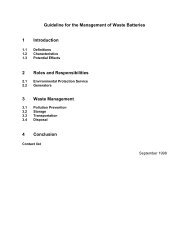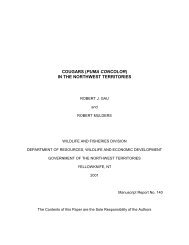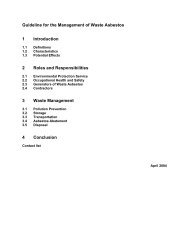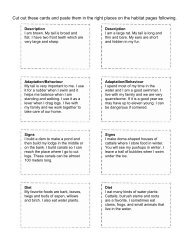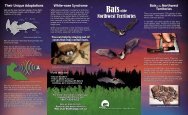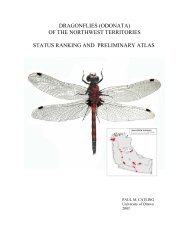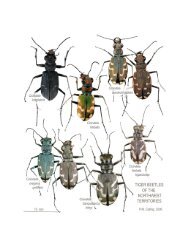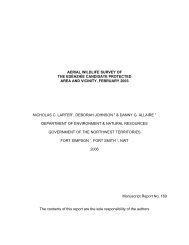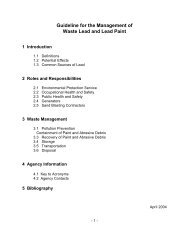Standard Operating Procedure (SOP) - Environment and Natural ...
Standard Operating Procedure (SOP) - Environment and Natural ...
Standard Operating Procedure (SOP) - Environment and Natural ...
- No tags were found...
You also want an ePaper? Increase the reach of your titles
YUMPU automatically turns print PDFs into web optimized ePapers that Google loves.
<strong>St<strong>and</strong>ard</strong> <strong>Operating</strong> <strong>Procedure</strong> (<strong>SOP</strong>)<br />
Capture, H<strong>and</strong>ling & Release of Bears<br />
Wildlife Care Committee Primary Author: Dr. Marc Cattet Version 2 - 2011<br />
4.7. Morbidity <strong>and</strong> Mortality<br />
Recommendations:<br />
Any injury, disease, or abnormality observed during or following capture or<br />
h<strong>and</strong>ling must be documented <strong>and</strong> reported to the GNWT-ENR Wildlife<br />
Veterinarian as soon as possible. An investigation should be conducted<br />
wherever possible.<br />
Investigation may include collection of samples (blood, feces, etc.) for<br />
submission to a veterinary diagnostic laboratory for further evaluation, e.g.,<br />
serum biochemistry, parasite identification. Ideally, the written report should<br />
include digital images.<br />
Dead bears must receive a detailed necropsy to determine the cause of<br />
death <strong>and</strong> be reported to the GNWT-ENR wildlife veterinarian as soon as<br />
possible.<br />
If the necropsy is performed in the field, appropriate tissue samples should be<br />
collected <strong>and</strong> frozen or fixed in 10% buffered formalin for submission to a<br />
veterinary pathology facility. Appropriate tissue samples should include<br />
brain, lung, heart, liver, kidney, spleen, lymph nodes, <strong>and</strong> muscle.<br />
Investigators should refer to a wildlife necropsy manual for details regarding<br />
required equipment, techniques, <strong>and</strong> sampling procedures (see for example,<br />
Munson 1999). A template for a field necropsy data form is provided in<br />
Appendix C. Documentation should also include a detailed history <strong>and</strong> digital<br />
images of the field necropsy to assist the veterinary pathologist diagnosing<br />
the cause of death. Alternatively, under some circumstances, it may be<br />
better to arrange shipment of the entire carcass to a veterinary pathology<br />
facility for detailed necropsy.<br />
A detailed report of the death must be written <strong>and</strong> every effort must be<br />
made to salvage the hide, skull, <strong>and</strong> other parts legally required, <strong>and</strong><br />
submit these with the report to a conservation officer as soon as possible<br />
4.8. Human Safety<br />
- Concentrated potassium chloride injected as a bolus<br />
intravenously is considered an acceptable form of<br />
euthanasia in a deeply anesthetized bear.<br />
- This technique should not be attempted by individuals unless<br />
they have significant experience in giving intravenous<br />
injections in bears.<br />
Recommendations:<br />
Appropriate h<strong>and</strong>ling <strong>and</strong> restraint techniques must be used for bears,<br />
<strong>and</strong> personnel must have appropriate training <strong>and</strong> experience in their use<br />
to avoid injury.<br />
Bears are capable of inflicting serious injury <strong>and</strong> transmitting disease to<br />
persons h<strong>and</strong>ling them.<br />
24



